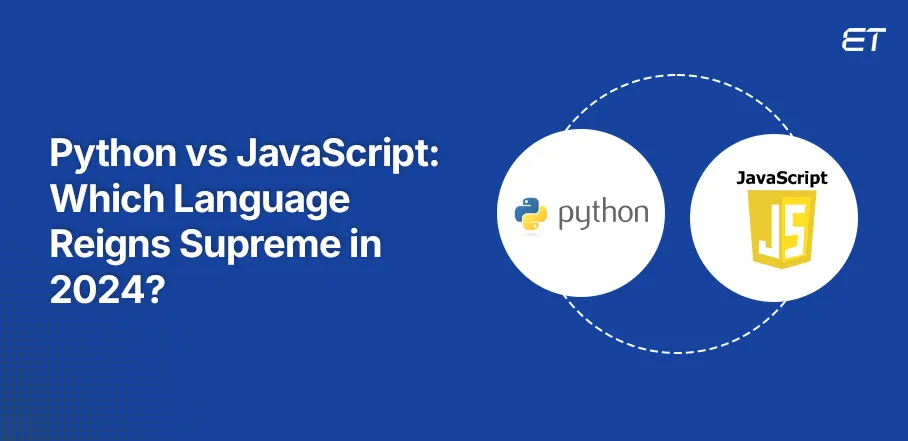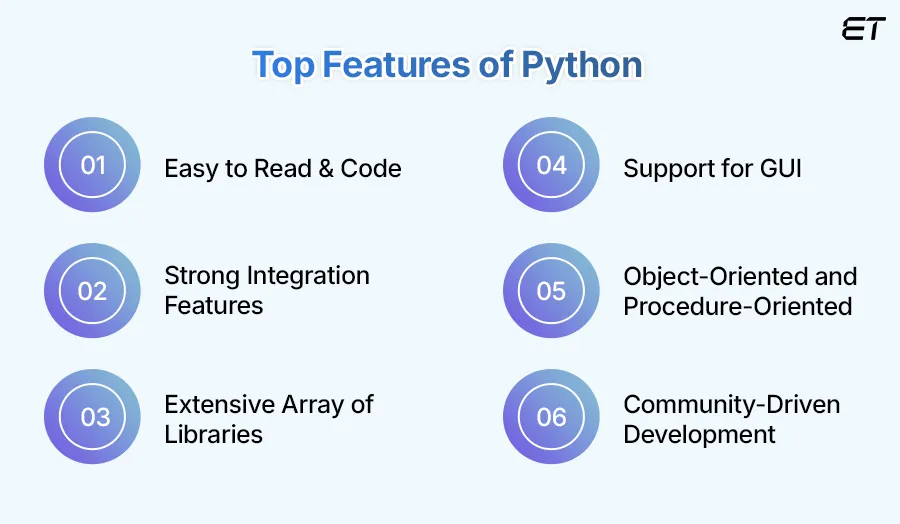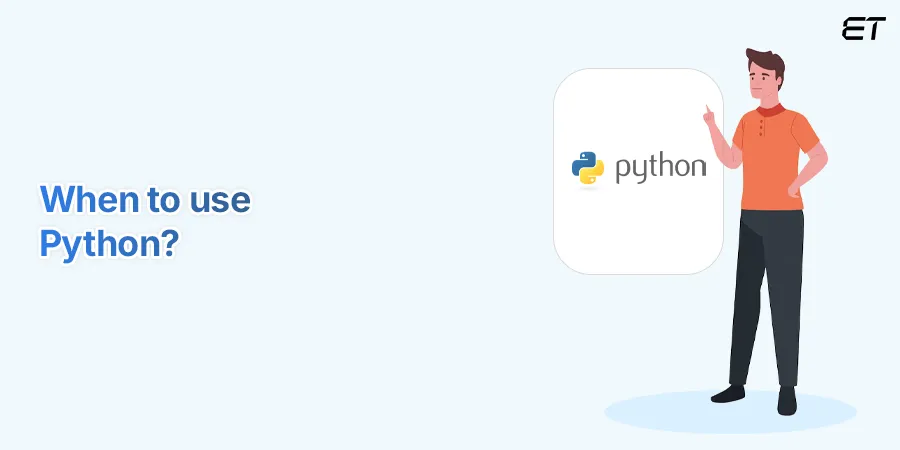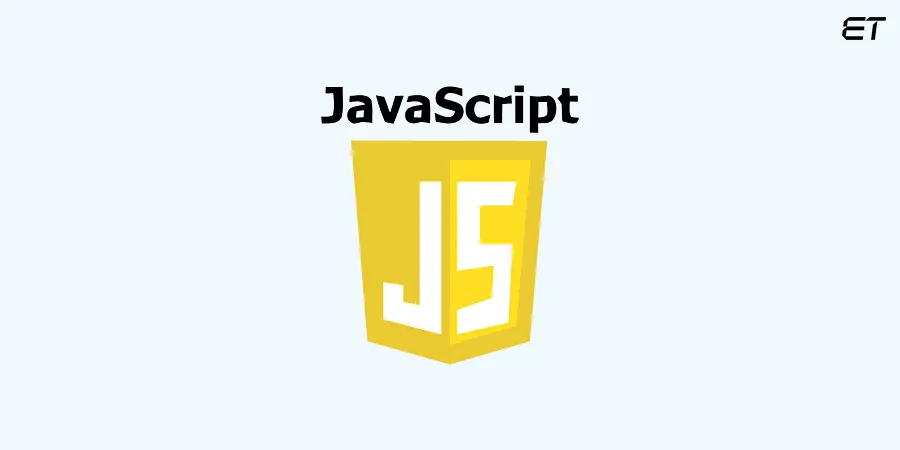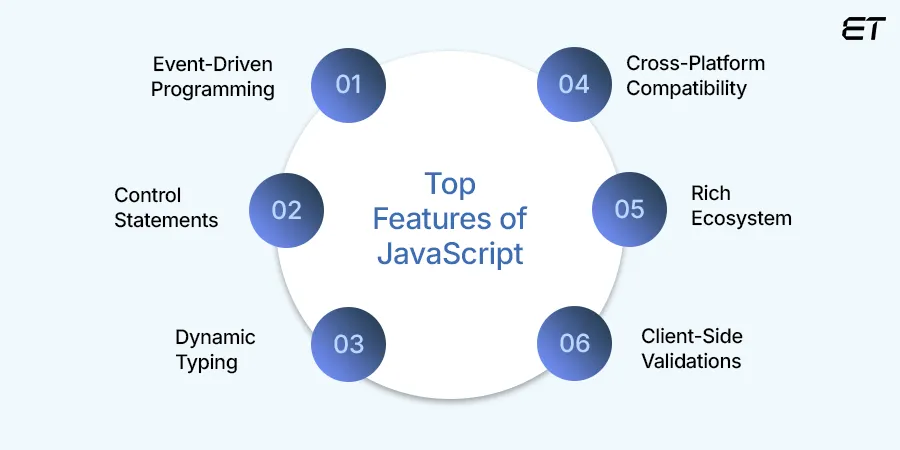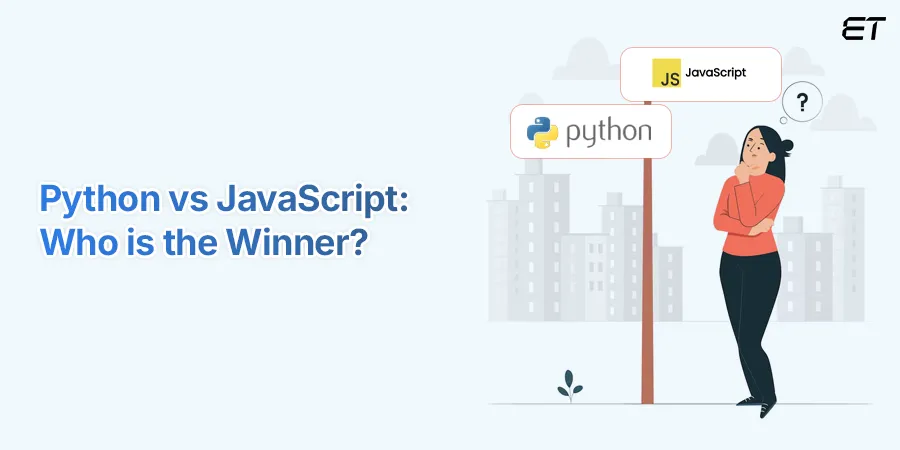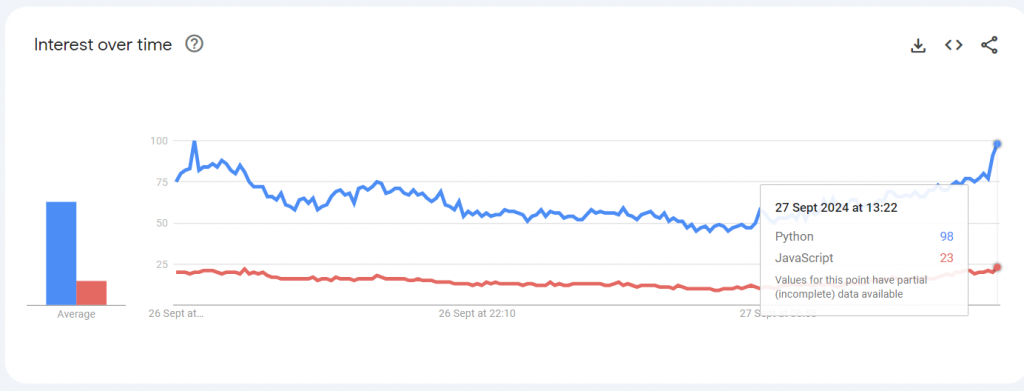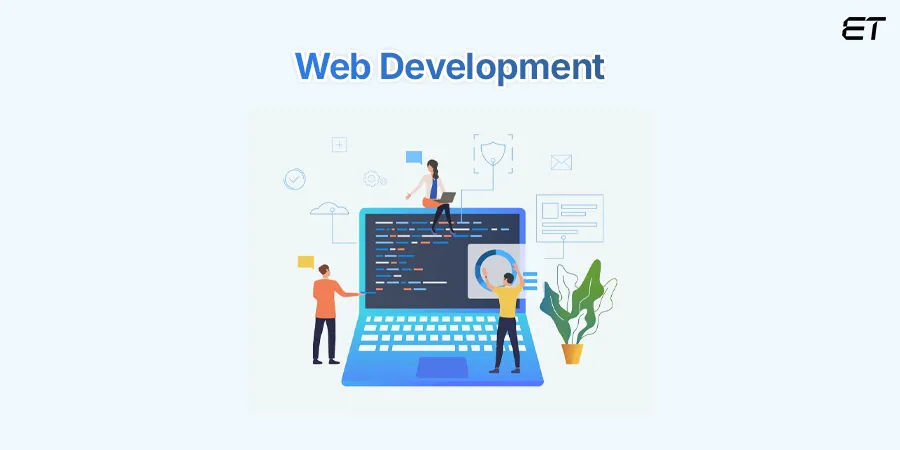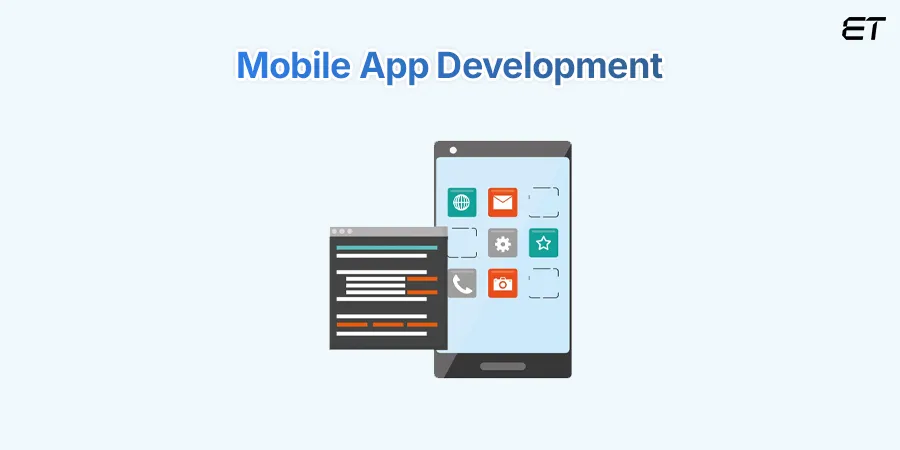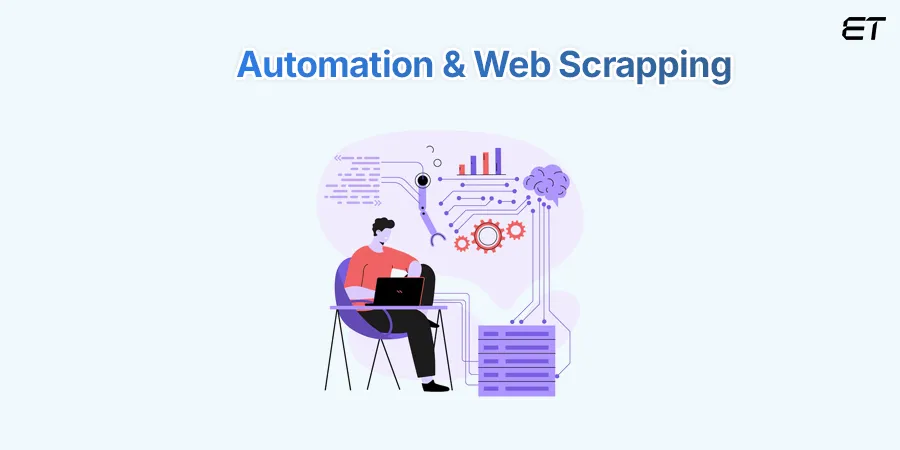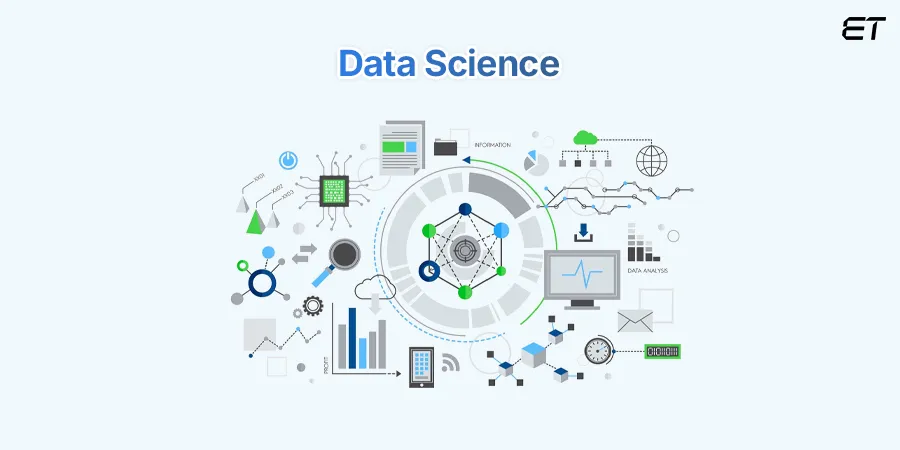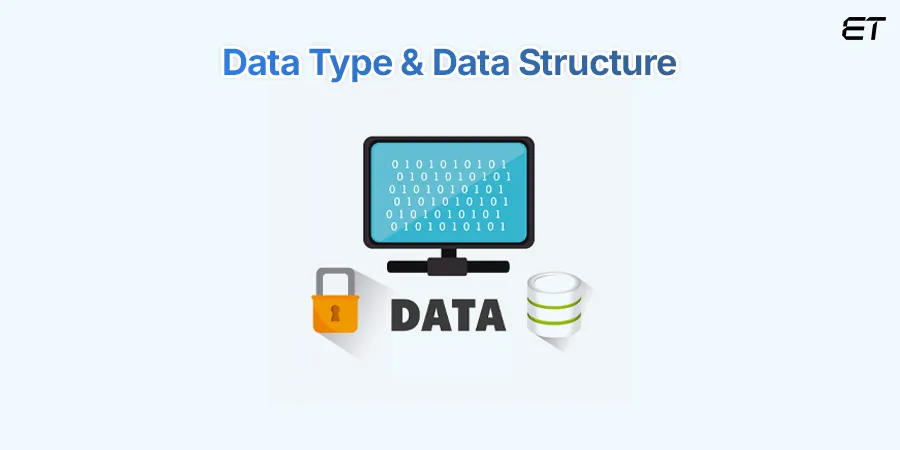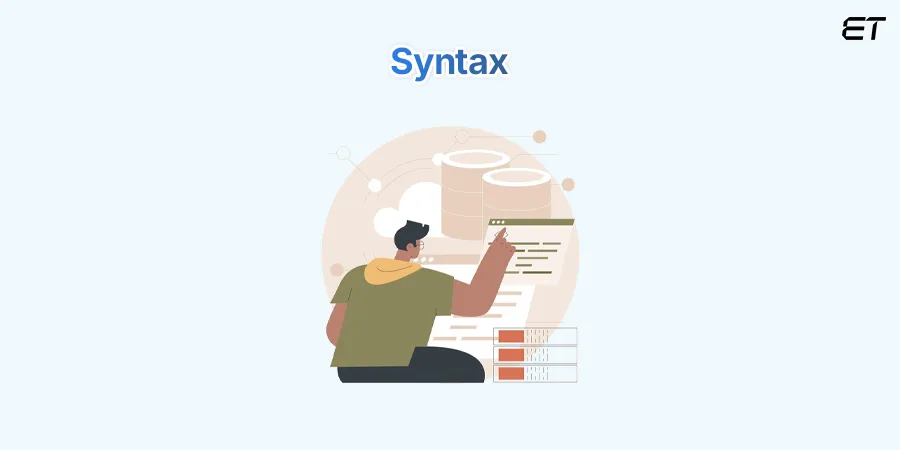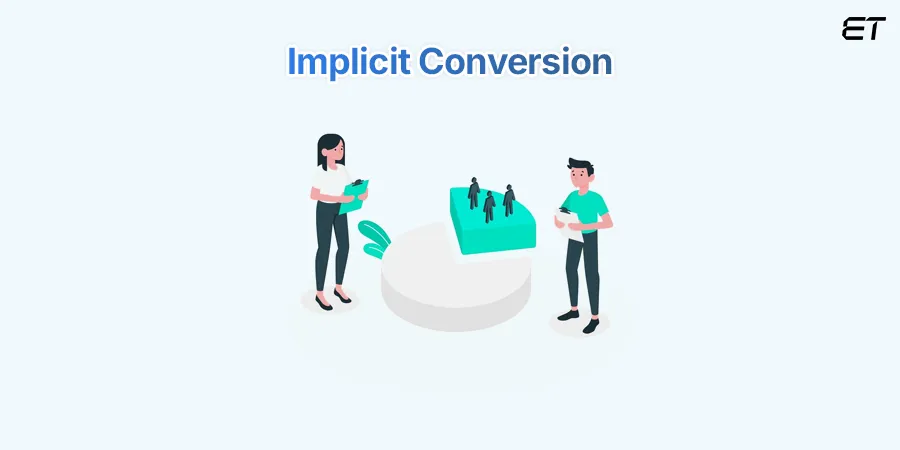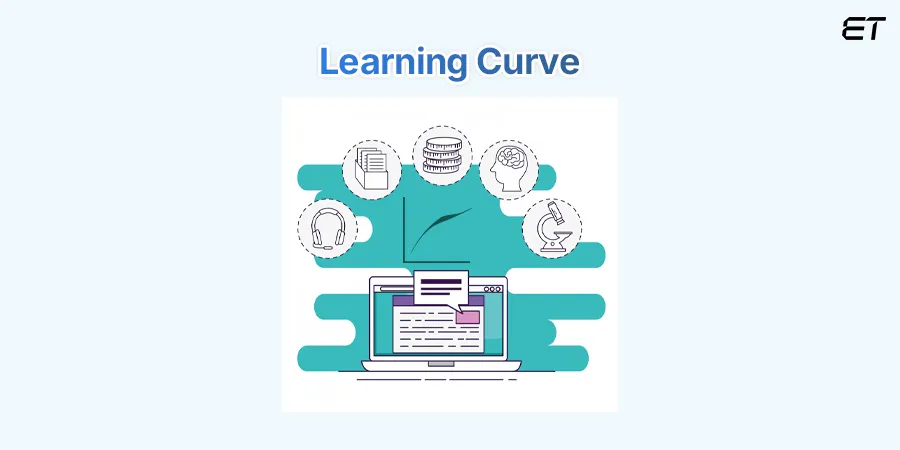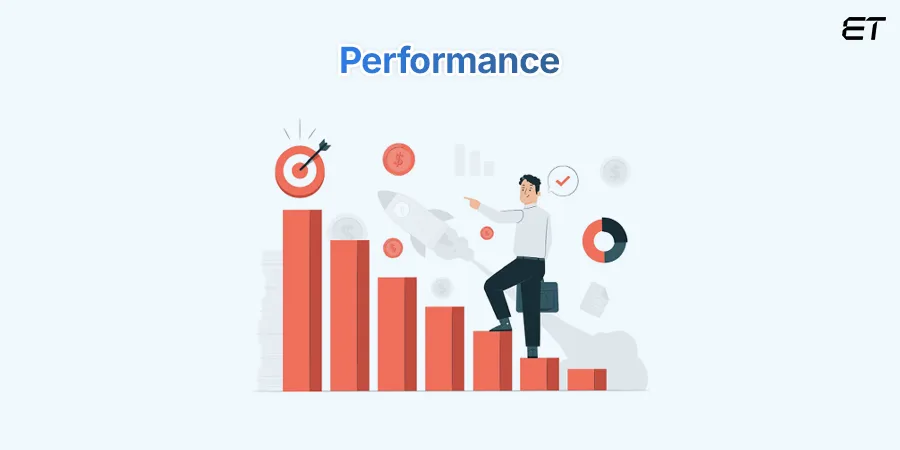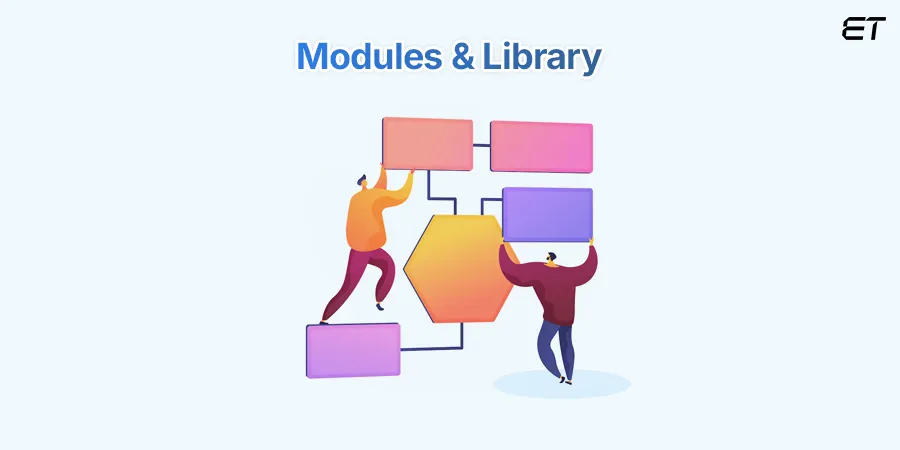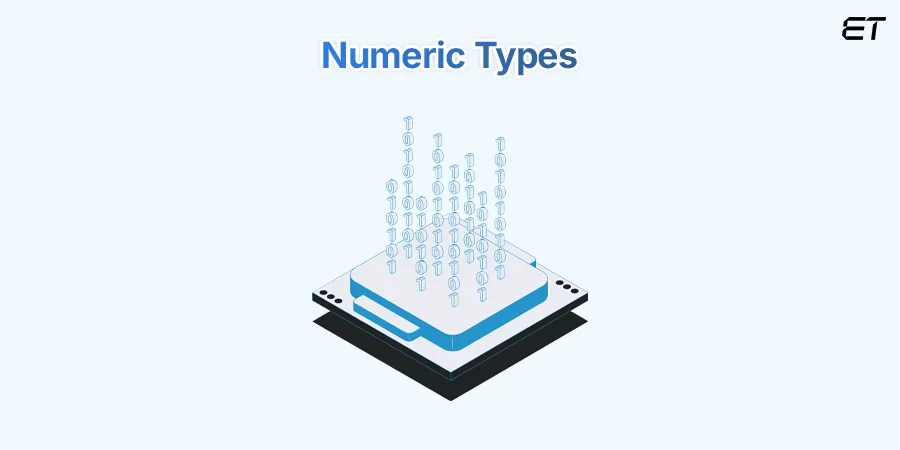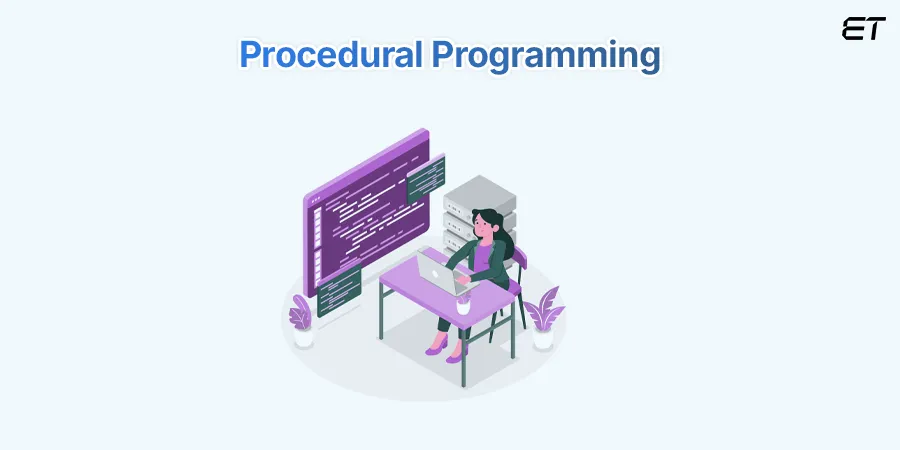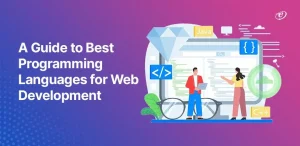In today’s dynamic digital world, the success of a web development project can be significantly impacted by the language you choose. As of 2024, Python and JavaScript were the most widely utilized programming languages among software developers worldwide. (Source: Statista)
The motive of writing this blog is to help CEOs and owners of any startup or established business by providing a comprehensive comparison of Python vs JavaScript to aid them in making the right language selection.
Although JavaScript and Python programming languages share various characteristics, including their lexical scoping and multi-paradigm methodology, they differ greatly in terms of syntax, usage, data formats, performance, etc.
However, the age-old debate between JavaScript vs Python has no clear winner!
But in this blog, we have tried our best and will show each aspect of both languages. Check out the table below for a quick comparison.
Python vs JavaScript
| Parameters | Python | JavaScript |
| Lanuch | Python was launched in 1991 by Guido van Rossum. | JavaScript was launched in 1995 by Brendan Eich. |
| Learning Curve | Generally easier for beginners; focuses on readability | A steeper curve due to complex features and asynchronous programming |
| Performance | Generally slower due to being interpreted | Faster execution, especially with Just-In-Time (JIT) compilation in modern engines |
| Syntax | Readable and clean, emphasizes whitespace for structure | Flexible syntax often requires attention to detail |
| Typing | Dynamically typed, supports type hints for clarity | Dynamically typed, can lead to unexpected behavior without careful management |
| Community | Strong support in data science, academia, and automation | Extensive community focused on web technologies and frameworks |
| Use Cases | Ideal for data science, machine learning, web development, automation | Essential for web development, mobile apps, and server-side scripting |
| Concurrency | Supports multi-threading but is limited by the Global Interpreter Lock (GIL) | Event-driven, making it suitable for handling multiple connections efficiently. |
Looking at the above table, we can say that Python has an advantage because it is the most easily learned language and is widely used in fields like artificial intelligence (AI) and machine learning (ML). On the other hand, JavaScript is used primarily for front-end web development because it allows for dynamic content and interactive user interfaces using frameworks like React and Vue.js.
Understanding the foundational elements of the programming languages you use and their various applications is essential if you want your business to have a successful online presence. We wrote this blog post for that reason!
The distinctions between Python and JavaScript, as well as their various benefits and use cases, will all be covered in this article, giving you the knowledge you need to choose which language to utilize for your next project.
Let’s get started and find the winner!
Overview of Python
Python is a high-level, interpreted, object-oriented language with dynamic semantics. Guido Van Rossum developed Python at Centrum Wiskunde & Informatica (CWI) in 1980.
According to expert developers, it is simple to read and simple to implement. It is a great language for Rapid Application Development since it can be used for both simple and complex programming.
Python’s support for packages and modules promotes code reuse and program modularity. The large standard library and the Python interpreter are freely distributable and accessible for free on all major platforms in source or binary form.
Popular frameworks like Django and Flask enhance its web capabilities, while libraries like NumPy and Pandas facilitate scientific computing, solidifying Python’s versatility and popularity.
Why Python Stands Out: Key Features Everyone Should Know
Python is a popular programming language among software developers, data scientists, and educators due to its versatility, ease of use, and readability. Here are a few of its best features:
1. Easy to Read & Code
Python is incredibly user-friendly! Because of this, it is simple to learn and write, and anyone can pick it up in a matter of days. Python’s syntax is simple to understand and resembles typical language, making it easy for beginners to pick up. Since there are no semicolons or brackets and the indentations define the code block, it is easy to understand what the code is supposed to perform just by looking at it.
2. Strong Integration Features
Python’s strong integration features allow seamless interoperability with other programming languages, such as C, C++, and Java. This capability enables developers to optimize performance-critical sections of code while maintaining Python’s ease of use for the rest of the application.
3. Extensive Array of Libraries
Unlike other programming languages, Python has several built-in libraries that may be imported and utilized immediately in a particular program. It provides several packages, operators, mathematical functions, and libraries (such as NumPy, Pandas, Tensorflow, etc.) that enable developers to save time by not having to write the code from scratch.
4. Support for GUI
A programming language’s ability to provide GUI, or Graphical User Interface, is crucial because it makes code more aesthetically pleasing. With packages like Tkinter, PyQt, and Kivy, Python provides strong support for GUI programming. With the help of these frameworks, developers can develop UI-friendly cross-platform apps.
5. Object-Oriented and Procedure-Oriented
One of Python’s key strengths is its ability to handle both object-oriented and procedure-oriented programming. This indicates that Python is aware of both object and class encapsulation. This flexibility encourages cleaner, more maintainable code by allowing developers to apply the optimal strategy for their particular challenges.
Find the Top 10 Object Oriented Programming Languages of 2024.
6. Community-Driven Development
Python has a lively and active community. Regardless of your level of programming expertise, the Python community provides a wealth of resources and assistance to ensure your success. Moreover, a multitude of forums, user groups, and conferences promote collaboration and knowledge exchange. Furthermore, Python is considerably enhanced in its capabilities by the vast ecosystem of third-party libraries and frameworks.
Use cases of Python
Python is a highly versatile programming language with a wide range of use cases across various domains. Here are some prominent applications:
| Web Development | Python has been a popular choice for developing scalable and reliable web applications because of frameworks like Django and Flask. Robust and reliable Django promotes clean design and effective development, while Flask is lightweight and best suited for smaller projects. |
| Data Science & Analytics | Python is the most popular language for data science, thanks to packages like Matplotlib, NumPy, and Pandas. Scientists and data analysts use these tools for data analysis, visualization, and modification. |
| Game Development | Python is used in game development with libraries like Pygame, simplifying the creation process of 2D games. Its simplicity and flexibility make it an excellent choice for prototyping and developing educational games |
| Automation & Scripting | Python excels in automation, allowing developers to write scripts to perform repetitive tasks efficiently. Libraries like Selenium can automate web browsers, while modules like os and subprocess help with file system operations. |
| Networking | Python’s libraries, such as Twisted and socket, make it suitable for developing network applications and protocols, enabling developers to easily build servers and clients. |
| Scientific Computing | Thanks to libraries like SciPy and Matplotlib, which offer features for numerical methods, symbolic mathematics, and sophisticated computations, Python is preferred in scientific research and computing domains. |
| Desktop Application | Python supports GUI development through frameworks like Tkinter, PyQt, and Kivy. These libraries enable developers to create cross-platform desktop applications with rich user interfaces. |
Top 5 Websites Built Using Python
Overview of JavaScript
JavaScript, sometimes referred to as JS, is a simple, Just-in-time compiled programming language for creating dynamic content for web pages. Although originally used for web pages and browsers, its use cases have expanded to various applications and environments.
Front-end development companies and the power of JavaScript frameworks.
When JavaScript was initially released in September 1995, it was named LiveScript. Later in the same year, since JavaScript was derived from Java, it was renamed JavaScript.
JavaScript allows developers to add animation, responsiveness to user input, and the ability to display dynamic, personalized, and real-time content to websites that would otherwise be static.
It is the backbone of front-end development with frameworks like React, Angular, and Vue.js. It also contributes to server-side development using frameworks such as Node.js.
How is Node.js transforming the way web apps are developed?
Exploring the Key Features of JavaScript: Why It’s a Top Programming Language?
JavaScript is a powerful, dynamic programming language primarily used for enhancing web pages. It is a pillar of modern web development due to its features. Have a look at its key features.
1. Event-Driven Programming
JavaScript works on an event-driven model. An event is a systemic action or occurrence reported so that you can take appropriate action. Because of the event-driven architecture, code can run in response to user inputs like keyboard strokes or clicks. This feature of JavaScript helps dedicated developers to create interactive and responsive interfaces.
2. Control Statements
JavaScript offers control statements like if-else-if, loop, and switch cases. These statements make the language powerful enough to write complicated logic, helping newbie developers create complex digital products in less time.
3. Dynamic Typing
Dynamic typing in JavaScript means variables have no fixed data type. Variables in JavaScript can have any kind of value. The value of the same variable can be a string value, an integer value, or any other type. This flexibility makes it possible to create applications quickly and change the code more easily.
4. Cross-Platform Compatibility
JavaScript is supported by all modern web browsers, ensuring consistent functionality across different platforms and devices. This cross-platform nature makes it essential for responsive web design.
5. Rich Ecosystem
A wide range of libraries and frameworks, including React, Angular, and Vue.js, are available for JavaScript. These tools speed up development and simplify complicated tasks. Furthermore, multiple plugins and community-contributed resources support a wide range of features, making JavaScript versatile for various projects—from straightforward webpages to intricate web apps and server-side solutions.
6. Client-Side Validations
JavaScript’s client-side validation feature allows users to provide valid data to the server when submitting a form. This quick feedback improves the user experience. Events like onblur and onsubmit can trigger functions for validation. Libraries such as jQuery Validate can make this process easier while guaranteeing proper data formatting and minimizing server traffic.
Use Cases of JavaScript
JavaScript is an adaptable programming language widely used for various applications in web development and beyond. Here are some common use cases:
| Web Applications | Frameworks like React, Angular, and Vue.js enable developers to build complex single-page applications (SPAs) that load quickly and provide a seamless user experience. These applications often rely on APIs to fetch data asynchronously. |
| Server-Side Development | With environments like Node.js, JavaScript can be used for server-side scripting. This allows developers to create full-stack applications using a single language, streamlining the development process and improving performance. |
| Mobile App Development | With JavaScript frameworks such as React Native and Ionic, developers can develop cross-platform mobile applications by utilizing a unified front end for both the Android and iOS operating systems. |
| Internet of Things (IoT) | JavaScript is increasingly used in IoT applications, allowing developers to build interactive interfaces for devices. Frameworks like Johnny-Five facilitate communication between hardware and software. |
| Desktop Applications | Using frameworks like Electron, developers can create cross-platform desktop applications with web technologies, leveraging existing JavaScript knowledge. |
| AI & Data Science | JavaScript enables AI and data science through libraries like TensorFlow.js for machine learning and D3.js for data visualization. It allows real-time analytics and interactive web applications directly in the browser. |
Top 5 Websites Built Using JavaScript
Battle of the Languages: Python vs JavaScript in a Head-to-Head Showdown
Let’s begin the show! We will discuss various aspects of both of these languages to assist you in choosing the technology that will work best for your project.
1. Python vs JavaScript: Popularity
Python and JavaScript are both highly popular. According to leading developers, JavaScript often leads in web-related fields, while Python’s growth is strong in analytics and AI.
Let’s check out JavaScript vs Python; which is more popular?
As of 2023, according to Statista, 65% of software developers believe that JavaScript is the most common programming language used by software developers worldwide in the last 12 months.
Python is ranked second by 54% of the questioned respondents.
Programming Language Used by Software Developers Worldwide as of 2023
While as per current Google Trends, Python is a more demanding technology.
2. Python vs JavaScript: Web Development
While JavaScript can be used for both front-end and back-end development, it is primarily used in client-side scripting to develop dynamic and interactive user interfaces. JavaScript frameworks like React, Angular, and Vue.js are considered the top front-end development technologies indispensable for modern web applications.
However, Python excels in backend development, given its frameworks like Flask and Django, which promote scalability and quick development. Python is a fantastic option if your web-based application needs to handle massive volumes of data, carry out intricate computations, or use machine learning technologies.
According to Clutch’s dedicated developers, Python is better at data processing and server-side reasoning, whereas JavaScript excels at handling real-time updates and user interactions.
3. Python vs JavaScript: Mobile App Development
In mobile development, JavaScript and Python serve distinct roles. Python, while not traditionally used for mobile app development, can still be employed with frameworks like Kivy or BeeWare. However, these are less common and often not as feature-rich or performant as JavaScript solutions.
JavaScript is a fantastic choice for cross-platform mobile development in addition to front-end and back-end development. You may create your mobile application in JavaScript and have it compiled into native iOS and Android apps using frameworks for JavaScript such as React Native, Ionic, and NativeScript.
Because of its robust ecosystem and community support, JavaScript is generally the more popular option for mobile development. It facilitates the development of responsive and user-friendly applications. Python works better for backend services or specific mobile applications that require machine learning and data processing.
Best React Native App Development Companies in 2024.
4. Python vs JavaScript: Automation & Web Scrapping
Python is the most often used programming language for automation. Developers can easily write automation code with it because of its intuitive syntax and robust ecosystem, which includes automation libraries like Pytest, Robot Framework, and Selenium. Python can be used to optimize procedures, automate testing, and perform other repetitive administrative duties.
In addition, libraries like Scrapy, made especially for web scraping, are available for Python. Larger or more complex web scraping applications benefit significantly from Python’s ease of use and readability, making the code easier to write and maintain.
Find the top 10 automation testing tools for web applications.
Another popular programming language for automation and scripting is JavaScript. JavaScript is a browser-based script that handles user-triggered events and interacts with dynamically loaded content. The web browser can be controlled like a human being, and information may be quickly retrieved from websites with the help of libraries such as Puppeteer.
5.Python vs JavaScript: Data Science
Python and JavaScript play distinct roles in data science. Python is an excellent language for data processing, analysis, and machine learning because of its many libraries, including NumPy, Pandas, and Scikit-learn. Additionally, machine learning tools such as Tensorflow can be used for prediction, clustering, and classification tasks. Because of these libraries, Python is a great environment for data science and other data-related work.
On the other hand, JavaScript lacks the extensive data science libraries found in Python, which is why it is not as widely utilized in data science as Python. In addition, because JavaScript is a single-threaded language, it is not appropriate for CPU-intensive or computationally demanding activities, which are frequently needed for data science projects.
However, because of tools like D3.js and Plotly, this programming language is currently becoming more popular in the data visualization space. It makes it possible to offer interactive data in browsers directly.
In conclusion, JavaScript excels in web data visualization, while Python is the preferred language for extensive data analysis, making both languages useful in the field of data science.
Find out which one to choose from a business perspective: PHP vs Python.
6. Python vs JavaScript: Data Type & Data Structure
Python and JavaScript both offer versatile data types and structures but differ in implementation.
While numeric types are available in both languages, Python offers a greater variety, including complex, floating-point, and integer numbers. However, the only types available in JavaScript are Number and BigInt.
Python has both immutable and mutable data structures, including tuples (tuple) and lists (list), dictionaries (dict), and sets (set). In contrast, the reference types in JavaScript comprise mutable collections such as objects and arrays, whereas Set and Map are reserved for specific purposes.
JavaScript shines in web-based applications, while Python’s data structures are easier to handle for data management; thus, both languages are useful for various programming requirements and scenarios.
7. Python vs JavaScript: Syntax
Python and JavaScript have distinct syntaxes that reflect their different design philosophies.
Python’s syntax is well known for being clear and easy to read. It defines code blocks with indentation rather than curly brackets, which maintains a uniform coding style and facilitates code readability. Variable declarations are straightforward, typically using = without type annotations, though type hints can be added. For example:
| def greet(name): print(f”Hello, {name}!”) |
JavaScript, on the other hand, is more flexible and complex. It uses curly braces {} to define code blocks and requires let const, or var for variable declarations. There are two ways to declare a function: utilizing arrow functions or conventional syntax. This gives you more options for defining behavior. For example:
| const greet = (name) => { console.log(`Hello, ${name}!`); }; |
8.Python vs JavaScript: Implicit Conversion
When a language automatically changes one data type to another, it’s called implicit conversion or type coercion.
Since Python is a strongly typed language, implicit conversions are typically prohibited, and data types are carefully enforced. Thus, Python’s implicit conversion is limited. For example:
| x = 5 y = “3” result = x + int(y) # Converts y to an integer |
JavaScript, on the other hand, performs more aggressive coercion. It is a weakly typed language that automatically transforms values between different data types when needed.
| let x = 5; let y = “3”; let result = x + y; // Converts x to a string, resulting in “53” |
According to leading software developers, Python maintains type integrity through explicit conversion, while JavaScript may lead to unexpected results due to its flexible coercion rules.
9. Python vs JavaScript: Learning Curve
Beginners typically choose Python over JavaScript because of its shorter structural lines, more understandable and concise code, easier-to-use functions and variables, and quicker development process. It has a general learning curve because, after you master the fundamentals, you may use your skills in automation, data science, and back-end development, among other areas.
Conversely, JavaScript has a higher learning curve due to its asynchronous programming approach and more complicated syntax. Furthermore, JavaScript is mainly connected to web development since it provides rich HTML and CSS integration for dynamic web applications.
10. Python vs JavaScript: Performance
JavaScript is ideal for dynamic and real-time interactions, while Python is a wonderful option for CPU-intensive jobs in terms of speed and performance.
The entire point of JavaScript’s invention was to speed up web pages and increase user interaction. Because of its event-driven architecture and integrated asynchronous programming capabilities (via promises and async/await), JavaScript is incredibly effective for I/O-bound tasks like managing several processes simultaneously in web servers.
On the other hand, Python’s multi-threaded application performance is limited by the Global Interpreter Lock (GIL). Despite introducing async/await technologies, Python’s asynchronous ecosystem lacks the maturity of JavaScript.
Python may provide exceptional efficiency with optimization techniques like NumPy or Cython, as demonstrated by its usage in platforms like Instagram. Optimizing Python code with Cython or NumPy will improve performance if you collaborate with an experienced Python app development company that understands this technique.
11. Python vs JavaScript: Inheritance
An object-oriented programming language has four fundamental concepts, one of which is inheritance. This method describes the ability of a class to inherit properties and methods from its parent class or any other class.
Although both Python and JavaScript support inheritance, their types differ from one another. Prototype-based inheritance is used by JavaScript, allowing objects to inherit directly from other objects. It provides flexibility in terms of adding or altering methods and properties dynamically at runtime.
Python uses an inheritance paradigm built on classes. It supports single inheritance, multiple inheritance, multi-level inheritance, hierarchical inheritance, and hybrid inheritance. It offers a straightforward framework.
12. Python vs JavaScript: Scalability
Regarding scalability, Python apps are less scalable because they only operate one thread at a time, but JavaScript apps are very scalable due to their multithreading feature.
Python developers frequently use cloud services, asyncio libraries, microservices architecture, and asynchronous programming to improve scalability. These methods enables Python applications to manage higher loads efficiently.
JavaScript also supports microservices architecture, enabling developers to break down applications into more minor, manageable services that can scale independently.
Overall, JavaScript is an excellent choice for creating scalable apps in various settings due to its adaptability and strong ecosystem. Though careful design may be necessary for Python to be scalable, scaling can be accomplished with the correct techniques and resources.
Read a beginner’s guide on mastering React Microfrontend.
13. Python vs JavaScript: Community & Ecosystem
Both Python and JavaScript ecosystems are continuously evolving, driven by passionate communities that contribute to their growth and innovation.
Python is becoming increasingly popular in various industries because of its vibrant community. It is well-suited for various applications due to its wealth of resources, packages, and tools.
In contrast, JavaScript has one of the biggest and most active programming communities. It provides a wide selection of open-source resources, libraries, and projects.
Python and JavaScript both boast vibrant communities and rich ecosystems, but they cater to different needs.
14. Python vs JavaScript: Modules & Library
Python includes many modules, so it is referred to as a “batteries-included programming language.” From file management, regular expressions, and web services to more specialized tasks like data analysis, machine learning, and scientific computing, this extensive standard library has it all covered. For more specialized needs, pip, the package management system for Python, can access a vast number of third-party libraries hosted on the Python Package Index (PyPI).
In contrast, JavaScript includes fewer modules, including math, date, and JSON. However, you can hire specialized developers and use the host environment to increase its capability.
However, JavaScript’s capabilities have greatly increased with the emergence of Node.js. Multiple basic modules in Node.js allow networking, file processing, and other features.
Node.js vs Python: Which backend technology is best for your project?
15. Python vs JavaScript: Mutability
Objects that are mutable allow their values to be modified after they are assigned. On the other hand, values cannot be changed by immutable objects.
In Python, there are two forms of data: mutable and immutable. While strings and tuples are immutable, which means they cannot be modified after creation, data types like lists and dictionaries are mutable and allow modifications. For example:
| my_list = [1, 2, 3] my_list.append(4) # Mutable |
In JavaScript, most objects and arrays are mutable, enabling changes to their properties or elements. However, primitive types like strings and numbers are immutable. For instance:
| let arr = [1, 2, 3]; arr.push(4); // Mutable |
Overall, both languages provide a mix of mutable and immutable types, influencing how data is managed.
16. Python vs JavaScript: Numeric Types
Data that is recorded in database columns as numerical values rather than in any other descriptive format is referred to as numeric data types. The ability to compute numerical types both statistically and arithmetically sets them apart from other forms of data.
When it comes to backend languages, Python has more numeric data types than JavaScript; JavaScript only has floating-type variables.
There were previously only floating-point variables in JavaScript. BigInt is a new primitive type that is supported by the V8 engine and modern browsers. The Python programming language, on the other hand, supports a number of numeric data types, including float, fixed-point decimal, and int.
17. Python vs JavaScript: Procedural Programming
While both languages support procedural techniques effectively, Python’s design leans toward clarity, while JavaScript offers more flexibility, especially in web contexts.
Python places a strong emphasis on readability and simplicity, and it lets programmers define functions with the def keyword. Its simple syntax facilitates the implementation of procedural paradigms, and modules and packages enable modular programming.
JavaScript also enables procedural programming, allowing functions to be first-class citizens and easily manipulated. Functions can be defined using function declarations or expressions, promoting a flexible coding style.
18. Python vs JavaScript: Memory Management
While both languages handle memory automatically, Python’s approach is more focused on reference counting, whereas JavaScript’s mark-and-sweep can be more effective in complex scenarios.
Python uses reference counting and a cyclic garbage collector to manage memory. When an object’s reference count drops to zero, it is deallocated. The cyclic collector helps clean up reference cycles, ensuring efficient memory usage.
JavaScript employs a mark-and-sweep garbage collection method, which is mainly handled by the V8 engine in settings like Node.js and browser interfaces. This procedure periodically recovers memory and finds items that are not reachable.
JavaScript vs Python: Pros and Cons
Here’s a comparison of the pros and cons of JavaScript and Python:
JavaScript: Pros & Cons
| Pros | Cons |
| Versatile for both front-end and back-end development | It can be challenging to debug due to the asynchronous nature |
| Rapid development with frameworks like React and Angular | Performance can lag behind compiled languages |
| Easy to learn for beginners with widespread resources | Security vulnerabilities like XSS and CSRF require caution |
| Event-driven and suitable for real-time applications | Weakly typed, which can lead to unexpected errors |
| Strong community and ecosystem with extensive libraries | Inconsistent behavior across different browsers |
Python: Pros & Cons
| Pros | Cons |
| Readable and clean syntax, promoting ease of learning | Slower execution speed compared to compiled languages |
| Versatile across various domains (AI, web, automation) | Dynamic typing may lead to runtime errors |
| Strong community support and abundant resources | Memory consumption can be high for large applications |
| Great for rapid prototyping and development | Limited support for multi-threading due to the Global Interpreter Lock (GIL) |
| Extensive libraries for data science, web development, and more | Not ideal for mobile app development |
Python vs JavaScript: eLuminous Technologies Developer’s Perspective on Language Choice
According to eLuminous developers, the choice between Python and JavaScript frequently depends on the project’s specifications. Thanks to its powerful libraries like TensorFlow and Pandas, Python is an excellent choice for data analysis, machine learning, and automation. Conversely, JavaScript is essential for web development, enabling interactive front-end experiences with frameworks like React and Node.js for back-end applications.
JavaScript or Python should ultimately be chosen based on the team’s experience and the project’s needs. With strong community support and continued development, both languages have bright prospects. For those who prioritize readability and rapid prototyping, Python might be a superior option. JavaScript is required when developing dynamic web apps. The choice should ultimately be made following the project’s objectives and market trends.
After reading this blog, the distinctions between Python vs Javascript will be apparent to you, which ought to help you decide which to use.
End Note
In conclusion, both JavaScript and Python are robust languages with a variety of practical uses. Python has a broad range of applications and is utilized in science. Web and mobile applications, on the other hand, use JavaScript.
Each language has specific use cases, benefits, drawbacks, and characteristics. Despite a few distinctions between the two languages, you can accomplish nearly anything with either of them.
We hope that the discussion of Python vs JavaScript above has helped you quickly select the one that best suits your needs. Both languages can be used to create robust programs.
The expert development team believes that while selecting a programming language, think about your objectives and evaluate the support that the community, libraries, and employment opportunities may provide. Lastly, consider the project requirements and your learning method to help you make an informed decision.
If you still have questions, feel free to contact us or leave a comment below. Our team of experts are always available to assist you.
Frequently Asked Questions
-
Which language (Python or JavaScript) is better for modern mobile app development?
JavaScript is generally better for modern mobile app development, especially with frameworks like React Native and Ionic that allow cross-platform development. Python is less commonly used for mobile apps, though Kivy and BeeWare can be used. JavaScript’s strong ecosystem and community support make it the preferred choice for mobile.
-
JavaScript vs Python: Which is easier to use?
Python is often considered more straightforward to use due to its clear, readable syntax and straightforward structure, making it ideal for beginners. JavaScript, while versatile, has a steeper learning curve due to its asynchronous nature and complex features.
-
Can Python and JavaScript be integrated?
Yes, Python and JavaScript can be integrated using various methods. For instance, you can use APIs to communicate between a Python back-end (e.g., Flask or Django) and a JavaScript front-end (e.g., React). Additionally, tools like Pyodide allow Python to run in the browser alongside JavaScript.
-
JavaScript vs Python: Which can develop high-performance web and mobile app?
JavaScript is typically preferred for high-performance web and mobile app development due to its non-blocking, asynchronous capabilities and frameworks like Node.js. While Python can be used, it generally lags in performance, making JavaScript the go-to choice for speed-critical applications.
Mastering performance testing: A detailed walkthrough.
-
How to choose the best language for my dream project?
When selecting the ideal programming language for your dream project, start by defining your project’s goals and necessary features. Consider performance requirements and evaluate the community support and available libraries. Also, take into account your team’s expertise and the language’s scalability and maintenance capabilities to ensure it fits your long-term vision.
Read our detailed guide on how to hire dedicated developers in India.
Project Delivery Head
Nitin has over 20 years of IT experience and 3+ years of experience in on-site work in Arizona, USA. In all these years, he has held the positions of delivery manager, module lead, and senior consultant. Expert in advocating product life cycle phases while using self-motivational skills and problem-solving abilities. He works on the principle of “Always Deliver More than Expected.”
